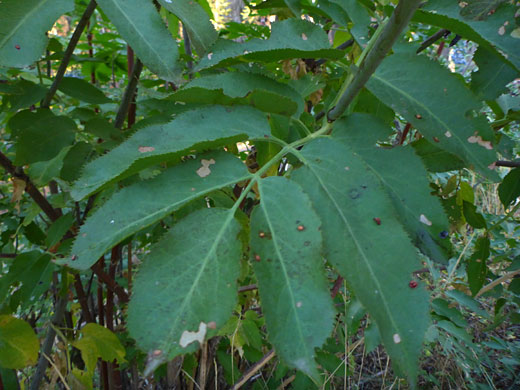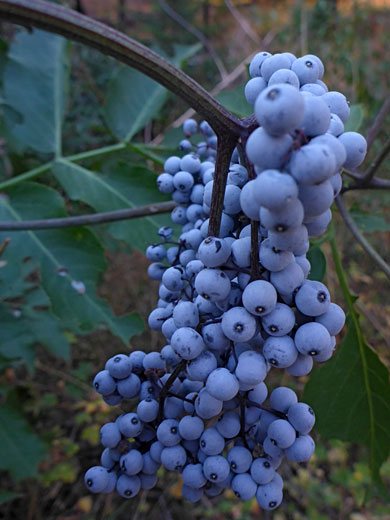Common names:
Blue elder, blue elderberry
Family:
Scientific name:
Sambucus cerulea
Synonyms:
Sambucus mexicana, sambucus nigra ssp cerulea
Main flower color:
Range:
All states west of the Rocky Mountains; most widespread in California
Height:
Up to 25 feet
Habitat:
Open woodland, streamsides; up to 9,000 feet
Leaves:
Pinnate; divided into 3 to 9 finely-toothed leaflets, each between 1 and 7 inches long
Season:
March to September
Sambucus cerulea is a small to medium-sized tree, up to 25 feet high, with a rounded shape; approximately as wide as tall, often with several dominant trunks. The common name, blue elder, refers to the fruits, which appear to be grayish-blue, though are actually almost black, with a whitish glaucous covering. Fruits are berry-like, in large, pendent clusters, produced in the fall. The inflorescence is a rounded, flat-topped cluster, up to 10 inches across, of small, creamy-white flowers, formed of a five-lobed calyx and five spreading petals.
Leaves are once pinnate, occasionally twice pinnate; leaflets are ovate to elliptic, up to 7 inches long and 2 inches wide, lined by small, sharp teeth. Leaflet bases tend to be asymmetric. Leaves are usually hairless; sometimes sparsely hairy.
Leaves are once pinnate, occasionally twice pinnate; leaflets are ovate to elliptic, up to 7 inches long and 2 inches wide, lined by small, sharp teeth. Leaflet bases tend to be asymmetric. Leaves are usually hairless; sometimes sparsely hairy.
All Contents © Copyright The American Southwest | Comments and Questions | Contribute | Site Map



